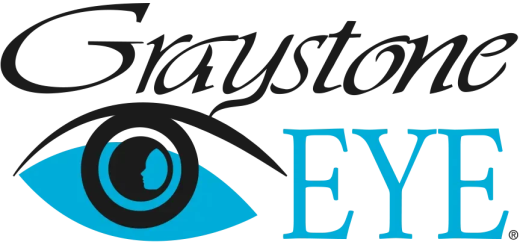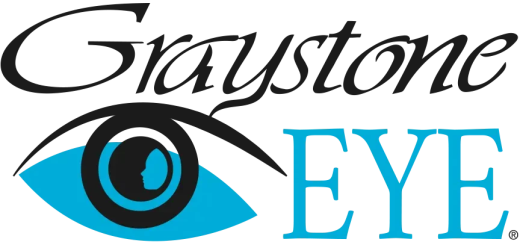Cataract surgery is one of the safest and most commonly performed surgeries worldwide.
Cataracts are a common condition that causes clouding of the eye's natural lens, leading to fuzzy or diminished vision. Graystone Eye offers advanced surgical solutions, including cataract removal and lens replacement, to restore vision and improve quality of life. Graystone emphasizes the importance of early detection and consultation with our experienced team to ensure the best outcomes for patients dealing with cataracts.
What is a Cataract?
A cataract is a clouding of the naturally clear lens of your eye. This lens is inside the eye and is found right behind your iris – the colored part of your eye. Cataracts are a normal part of aging, but, left untreated, they can cause gradual loss of vision or even blindness.
The surgeons at Graystone Eye can help restore vision with cataract surgery. Cataract surgery today is one of the safest and most commonly performed surgeries worldwide.
Laser-Assisted vs Traditional Cataract Surgery
Now with advanced technology available, Graystone Eye is proud to offer our patients Laser Assisted Cataract Surgery. This technology ensures the surgery is safer, with more precise and consistent incisions, faster healing times, and allows for better visual outcomes.
Cataract surgery with a basic lens implant is typically covered by insurance when surgery is medically necessary. For patients who choose to proceed with traditional cataract surgery, a basic lens will be used, and a handheld blade is used to create incisions in the cornea for lens placement.
For patients who choose to have advanced technology lenses with astigmatism correction, the laser assisted cataract surgery will be performed. Laser assisted cataract surgery uses a computer-controlled laser that precisely determines the size, shape, and location of the incisions. By combining computer controlled laser technology with advanced 3D imaging, Laser Cataract Surgery is customized to meet your unique visual needs; resulting in a better visual outcome.
Both traditional cataract surgery and laser assisted cataract surgery uses ultrasonic energy to divide the natural lens, to be removed into segments. Laser cataract surgery allows this division to be made quicker, with less ultrasonic energy. Laser cataract surgery causes less strain on the eyes delicate tissues, including the cornea as well as the membrane and fibers that hold the intraocular lens in place.
Advanced Technology Lens Implants
Choosing to have cataract surgery is the first step in improving your vision; but equally important is selecting the best intraocular lens (IOL) that fits your lifestyle and vision needs. In addition to standard lens implants historically used for cataracts, Graystone also offers Advance Lens Technology. There are several options when it comes to selecting your replacement lens. Below is an overview of the different lens options.
For patients with higher amounts of astigmatism, Refractive Laser Assisted Cataract Surgery can be combined with an advanced IOL, called a Toric lens. This lens is best for a person with a high amount of astigmatism. This premium lens corrects the astigmatism as well as nearsightedness or farsightedness. For patients who desire the least dependence on glasses after surgery, for both distance and near vision, Refractive Laser Assisted Cataract Surgery can be combined with a Presbyopia correcting IOL called a Multifocal lens. This lens is designed to provide the best visual outcome, allowing focus on both near, intermediate, and distance objects, with complete elimination of glasses for the majority of patients.
The fees for Basic cataract surgery are typically covered by insurance when surgery is medically indicated; however, the patient is still responsible for any co-pay or deductible – depending on the individual insurance plan. Please be aware that in choosing Basic cataract surgery, one is committing to being dependent on glasses or contacts for clear vision postoperatively.
Your doctor will determine if you are a candidate for cataract surgery, and help you decide which treatment option and lens is right for you.
What to Expect for Your Cataract Treatment
Your doctor or optometrist will schedule an appointment for you with the Graystone eye specialist who will perform your surgery. On the day of your appointment, please bring a list of all your medications, as well as your Medicare and medical insurance cards. It will be necessary to arrange for someone to drive you home after your appointment, as your eyes will need to be dilated, and it may be difficult for you to drive. A complete eye examination and medical history will be done, as well as appropriate eye tests and specialized eye measurements. This will allow the surgeon and his team to gather all the necessary information for performing your surgery. The scheduler will make arrangements for your procedure at the hospital or at the Graystone Eye Surgery Center and will provide detailed instructions regarding what to expect. Because only local anesthesia with mild sedation is used, even patients with severe chronic illnesses can safely have their cataracts removed. The surgeons at Graystone Eye always consult with your medical doctor if there is any question regarding your general health.
What Happens on the Day of Surgery?
On the day of your surgery, you will report to the hospital or surgery center at the scheduled time. You will receive all the necessary medications and anesthetics. Cataract surgery is performed by a special ultrasound procedure called “phacoemulsification” which allows the surgeon to remove the cataract through a very small incision. Usually there are no sutures involved. The cloudy lens is replaced with an artificial lens allowing the vision to become clear once again. Nearsightedness and farsightedness can also be corrected during this surgery by using the appropriate power of the intraocular lens.
Since cataract surgery is performed under local anesthesia there is no discomfort, and you will be awake for the entire procedure.
The eye is usually patched for a few hours after the surgery. Normal activities can usually be resumed very quickly.
What Happens After My Surgery?
Following surgery, you will be given your postoperative instructions and discharged. It will be necessary to arrange for someone to drive you home after your surgery as it will be difficult for you to drive. Your eye will be examined the following day by either your surgeon or your optometrist. Your eye doctor may also prescribe new glasses in 4 to 6 weeks if they are needed.











